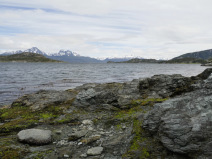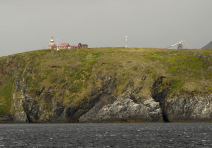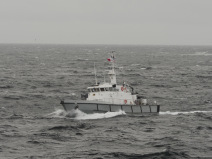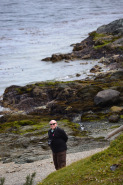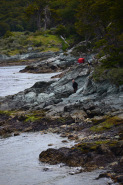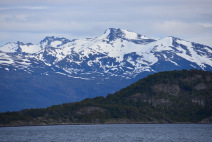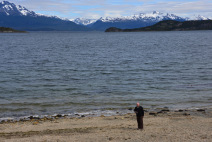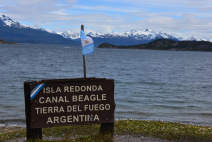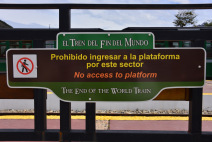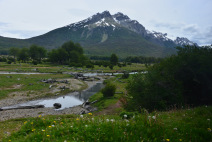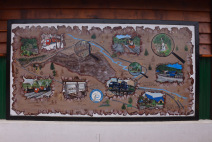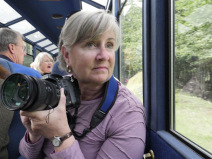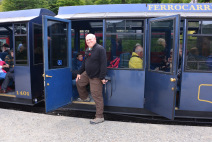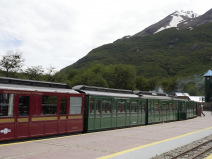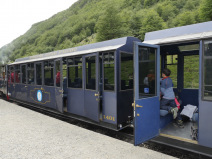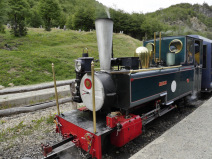We cruised to the southernmost town on the South American continent and last outpost before Antarctica, Ushuaia has earned the name el Fin del Mundo. Ushuaia is, quite literally, the end of the road. Located off the tip of the South American continent in the archipelago called Tierra del Fuego, it’s considered the southernmost city in the world. its location — between snow topped mountains and the Beagle Channel — is striking.
This is home to Terra Del Fuego, it ranks up there with all those exotic named places on this trip. The island was named in the early 1500s when Ferdinand Magellan sailed by on his trip to circumnavigate the globe. He saw fires used by natives on the shores and dubbed it a land of fire. The natives of this land were naked and fire was an important component of their culture. (I would agree with that). It’s most striking features are the mountains, the southern Andes range. Peaks jut high to heaven and spread far across land and sea, snowcapped and rocky, solemn and jagged. They preside as stone sentinels, cold, rugged, remote, isolated.
Within this land of bleak emptiness was a prison. In the early 1900s, prisoners worked every day building roads, building infrastructure and chopping wood to keep the furnaces going. The prisoners built a railway to take them each day further into the woods to find wood and to cart the wood back to town for use as a building material and heat source. The train is still there and the stumps you see in the picture are the remains of their chopping, as the guide says you can see the depth of the snow at the time the tree was cut, some are high others are low.
Sure, we had comfortable accommodations, fantastic food and evening entertainment on board our ship and were never going to be seafaring explorers, but it still felt mystical to be connected even in this way to the globetrotting explorers of the past with only 1,000 kilometers of water separating us from Antarctica. Our nerves were zinging with a combination of anticipation, anxiety and over preparedness. Sea sickness pills, check; empty SD cards, check; layers and layers of clothes, check! Ok let’s go.
Today, the act of sailing around the southernmost tip of South America is a veritable rite of passage and, for me, the experience of a lifetime. The Cape Horn is the southernmost headland of the Tierra del Fuego archipelago of southern Chile. It is at this spot the Atlantic and Pacific Oceans meet. For years before the Panama Canal all boats going to the Pacific had to round these rough waters. The light house is still there and providing service to those ships passing by.
The precarious journey owes its notorious reputation to the body of water that lies between the Atlantic and Pacific oceans known as the Drake Passage. Named after explorer Sir Francis Drake, the first recorded passage through these waters occurred in 1616. While the passage is a nature lover’s paradise (whales, dolphins and seabirds are plentiful in these waters), the weather conditions here could be so ferocious that sailing ships, at times, barely made headway against it. The current of nearby Antarctica carries an immense volume of water with it — more than 600 times that carried by the Amazon River.
We were extremely lucky with weather. In fact, it was fairly smooth waters and we cruised the entire Drake passage in one day and were treated to an extra day in Antartica. Our Captain forecasted that the weather was predicted to be extraordinarily good for our first day in Antartica. He was right, Antartica is amazing, our next few posts covers our 4 day visit to Antartica, containing great photos and stories.

